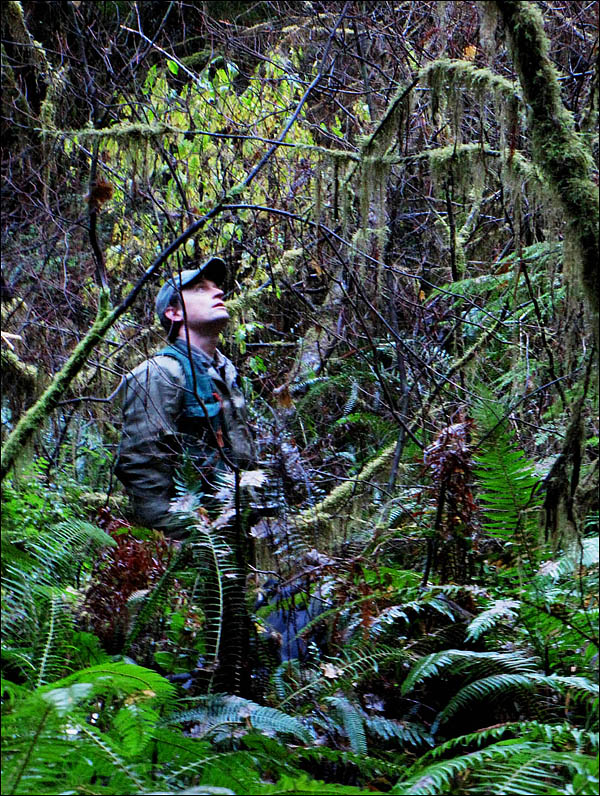
The Wild Trees & Forest Giants of the Pacific Coast Book Reviews
by authors Richard Preston & Dr. Robert Van Pelt
Book reviews by Mario D. Vaden: Certified Arborist and photographer
The Wild Trees
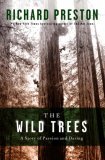
You are about to read a review on The Wild Trees unlike most book reviews written about it. Several main characters are friends and I have first-hand experience exploring several parks noted in the chapters. We found new discoveries since 2007, beyond what Preston was aware of or wrote about but I don't get into that aspect much on this page.
A Story of Passion and Daring written by Richard Preston is an adventure narrative involving some of the largest and tallest known coastal redwoods and forest of northern California. It's about the people who explore, study and climb them, combining adventure and science. The book gets 5 stars. *****
If you read it once, pick it up and read twice. The second time through will be just as good, but different. The second reading should become even more informative than the first time you flipped the pages.
In 2011, one of the book's characters provided some interesting information - that Hyperion the tallest redwood at the time was discovered after the book was complete. Richard Preston added an extra chapter as the final pieces of the story fell into place. Apparently he changed the book when it was already scheduled for press.
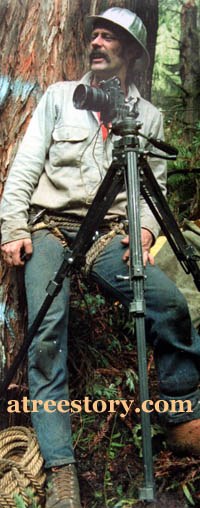
Most of the redwood and forest facts are accurate. The narrative and descriptions are picturesque and memorable. I hope this book becomes a classic. THE WILD TREES is not exclusively about redwood adventure. Other forests are described too like Eucalyptus at the Hume Plateau Skeleton Forest in Australia.
For those who read THE WILD TREES, recall that character Steve Sillett and others were said to be the first to ascend and enter old growth redwood canopy (p. 125, 131, 137, 157). That was predominantly for scientific exploration but Preston wrote it in a way that implied nobody else ever climbed up to redwood crowns before them. But they were not the first to enter or discover some "lost world" in the towering coast redwood canopy.
An older more experienced climber Gerald Beranek not mentioned in THE WILD TREES, reached the top of old growth by 1973. It seems appropriate to introduce this fact. Beranek also conveyed that at least two others - Vassy & Castro - got all the way up into the old growth coast redwood canopy even earlier around 1966 (Sillett wasn't even born until 1968). Their old growth canopy climbs were not for research but those are the facts and real history.
Image: Gerald Beranek, 1970's / 1980's
Beranek is actually a small legend among tree workers, climbers and arborists, nationally and internationally partly due to his book The Fundamentals of General Tree Work. How Preston would never hear about him makes me scratch my head. A few of us questioned whether Preston or others actually knew of Beranek but ignored him due to a professional logging background in the past. Furthermore, Redwood National and State Parks visitor centers would not carry his books like Redwood, Tree of Dreams and Fortune due to a page or two that could ruffle feathers of the politically correct crowd. But Humboldt Redwoods State Park's visitor center carried all of Beranek's coast redwood books when I was browsing down there.
Beranek was avid with a camera through his lifetime, enjoying and capturing beauty of redwood forests. See atreestory.com. Although his earlier old-growth climbs were not scientific, the 1970s and 1980s climbs are also historical passion and daring, a very interesting piece of northern California culture and history. With an educational background in rooted in horticulture, I'm certain Beranek made several observations during his ascents into the old growth upper canopy.
Preston's book The Wild Trees is one that someone either likes or does not. Most readers should enjoy it. And I don't recall many middle ground reviews. It can hold attention for hours. Some folks called it a bit choppy, but I think "rugged" is appropriate to describe it. The style is more like a good storyteller sharing an adventure while sitting around a campfire.

advertisement
It's worth adding that Preston did an excellent job keeping track of notes and facts. I read other short news articles about record conifer discoveries where writers had difficulty keeping the facts straight. Not blaming them. but it can be a challenge to grasp new concepts. I'm saying that Preston did a good job because he had to build the entire story from scratch about something that was out of his league when he first stuck his foot in the door. He mixed a ton of facts and information with adventure and that's not an easy task.
The main characters are Steve Sillett and Marie Antoinne who become redwood canopy researchers. Also Michael Taylor a naturalist and explorer who discovers the tallest known redwoods with Chris Atkins another man with passion for tall coast redwoods. The visual aspect of the book is comprised of black and white illustrations by Andrew Joslin. One intricate drawing of a redwood in an "Atlas Grove" study plot offers a sense of scale. The redwood he illustrated was the same tree National Geographic photographed for their 2009 magazine centerfold. It is called Iluvatar. For information about Iluvatar and a photo of Andrew Joslin see my page Iluvatar coast redwood. As long as this next link works here's a Youtube video about National Geographic 2014 redwood photograph.
I've been to several of the groves described and learned that Preston enlarges the truth sometimes but that doesn't ruin the story. Just realize that the redwoods and climbing are romanticized and Preston wrote for shock and awe, successfully buiding suspense. It seems that wherever a superlative could be used, it was. But that may be what makes it such a good book. Seriously, it's fun to read.
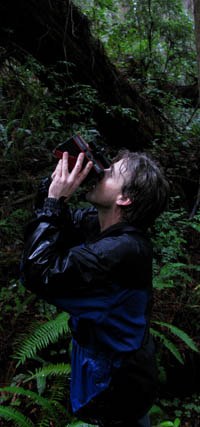
From what I can ascertain, Preston spent more time around the climbers and certain noteworthy redwoods and much less time bushwhacking to explore from scratch. I learned about this while exploring for new discoveries with Steve Sillett, Chris Atkins and Michael Taylor.
Preston described one exploration with Michael Taylor in Devil's Creek which is one of the more difficult areas in Redwood National Park. Richard Preston described it as the toughest of his bushwhacks. And even if Preston explored just one time he's spot-on when he says it's difficult getting through the Devil's Creek coast redwood forest.
Even without asking Taylor or Atkins, it's evident Preston did not help them measure with lasers the same way he helped Sillett with climbing and the tape drop method. Preston noted lasers as accurate to within a foot. But Atkins and Taylor can laser measure within inches if not less. In fact, when the 268 ft. world record pine was measured in southern Oregon, Taylor's laser measure differed from a climb team's tape drop by only 1 millimeter !!
Image: Michael Taylor, Lost Man Creek w/ laser rangefinder, 2009
Maybe that's more interesting to me than to you. But little bits and pieces give me a feel for Preston's involvement.
One remarkable aspect of the book are statements about the scientific or research community being ignorant for so many years about the biodiversity that existed up in the oldest of the big redwoods. If that's true, the scientific community missed some golden opportunities. Because for decades, loggers had been dropping old growth redwoods to the forest floor along with tons of lichens, canopy soil and epiphytes. Samples would have been easy to come by, ready for collection. Although the fallen species were no longer in prime habitat for study, the existence would be realized. I wish Preston could have dug deeper into that angle and interviewed more old-timers about it. Because when large redwoods fall the news seems to get around in no time. He basically revealed what may have been a big lack of interest about anything growing or happening overhead.
The Wild Trees content covers a wide range - friendships, mentors, how redwoods and other species function, emotional grief, climbing techniques, danger, logging history, rain forests, childhoods, a wedding up in redwoods, discovery of champion conifers, near-fatal falls, engagements, leeches overseas and much more.
The adventure story begins along the south Oregon coast where 3 college students, Marwood, Scott and Steve, pull over in a Honda "Crypt" to stretch and watch sea birds. That first chapter "Nameless" soon describes Steve and Marwood free-climbing hundreds of feet up an old growth redwood. Beginning with a running leap into a smaller redwood using it like a ladder, then a flying leap at seventy feet high to the lowest limbs of the bigger redwood. With no safety gear they reach the top of the canopy where ripe huckleberries provided a snack and a maze of limbs offered seating with panoramic view of the redwood forest. This is where the adventure begins.
By the second chapter "The Kingdom" before they climbed back down, author Preston is already educating the reader about how redwoods grow and develop. And the lessons about redwoods, plants and epiphytes are woven from cover to cover.
The third chapter "Island in the Lake" time travels back 7 years to another climb: solo in a balsam fir. The location is Treaty Island in Lake of the Woods, near the city Kenora, Ontario, and Marie Antoinne is the one climbing. She is going up an evergreen on her grandparent's property, who live there in a 22 room mansion: their hotel in the 1950s, with hidden passageways. Down the hill from is the Cottage where Marie lived with her parents. This chapter brought memories. My mother was born in Kenora, and in my youth around 1970, she took me there to stay 3 summers with my grandmother at the old house where my mother spent her youth. The lake is about 70 miles long with over 14,000 islands.
The last chapter ends with a group of climbers ascending an exceedingly tall redwood in Redwood National Park. And it is not a free-climb. They are fully equipped on a small expedetion and National Geographic is tagging along to document a historical redwood climb.
Worth full price when first released, this is a lot of book at an affordable price.
If the one chapter about the Skeleton Forest makes you curious about Eucalyptus or other big species Down Under, check out the Australia Champion Tree Registry.
In closing, I'd like to consider something about Richard Preston for a moment.
Following 2006 when Preston completed the book and joined the Hyperion coast redwood climb, I haven't heard a word of him visiting the coast redwoods of Redwood National and State Parks. At least up to 2018 editing this page today. I'm certain he is a busy man, but it struck me as very odd, because many people I know who gained a real passion for coast redwoods, manage to go back there. Like Thomas from Germany, who flies back every year or two, or another man who travels from Illiniois several times in the year. For Preston to have written this book, and not return ... that seems remarkable.
In Preston's absence, he never got to see the new larger coast redwoods discovered after his book went to press.
Forest Giants of the Pacific Coast
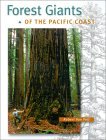
Another fine book - mostly about forests and giant conifers - is Forest Giants of the Pacific Coast by Robert Van Pelt. Apparently this book was only printed as paperback. I've never seen a hardback copy before. FWIW ... my copy says printed on acid-free paper ;-)
My first reading of Forest Giants was on a plane flight to visit a friend. The interesting photos and information kept me busy for half the trip, both directions during my trip. The book gets 5 stars. *****
This book about the largest conifers along the west coast is in itself a giant of a book. The contents are remarkable. Van Pelt has so much experience in the west coast forests, that some friends affectionately call him The Lorax.
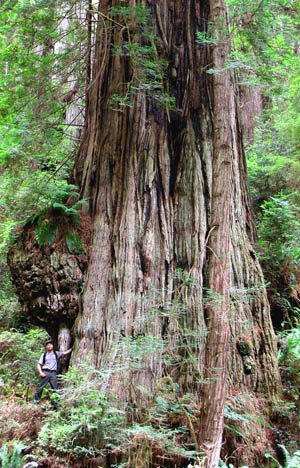
Robert Van Pelt has a long professional history working in forests, and the content of Forest Giants stretches no words. It shoots straight from the hip, and is very interesting for those who enjoy Pacific coast conifers.
Image: the photo is Sir Isaac Newton, taken 2009. This is one of the large coast redwoods in Forest Giants of the Pacific Coast. The burl weighs over 20 tons.
Forest Giants is not a story, but it's not like a text book either. It's an excellent collection of nice big photographs of many largest known conifers of the west coast region: California, Oregon, Washington, British Columbia.
Robert Van Pelt is a very good artist and illustrator. Many pages include his drawings along with the photographs, providing a sense of scale. The sketches are exceptional. Possibly for sale, but I understand he may be hard to track down sometimes ... a busy guy.
There is a lot more than just photos. Van Pelt provides a lot of information about climate, habitat and characteristics of the different species. And a fairly thorough explanation is offered about how to measure trunk diameters and height.
Robert Van Pelt is mentioned in The Wild Trees, and was interviewed by Richard Preston. Van Pelt is basically a colleague or associate of Sillett and Antoinne, characters of Preston's book.
Photo: Andrew Joslin, Illustrator of book The Wild Trees
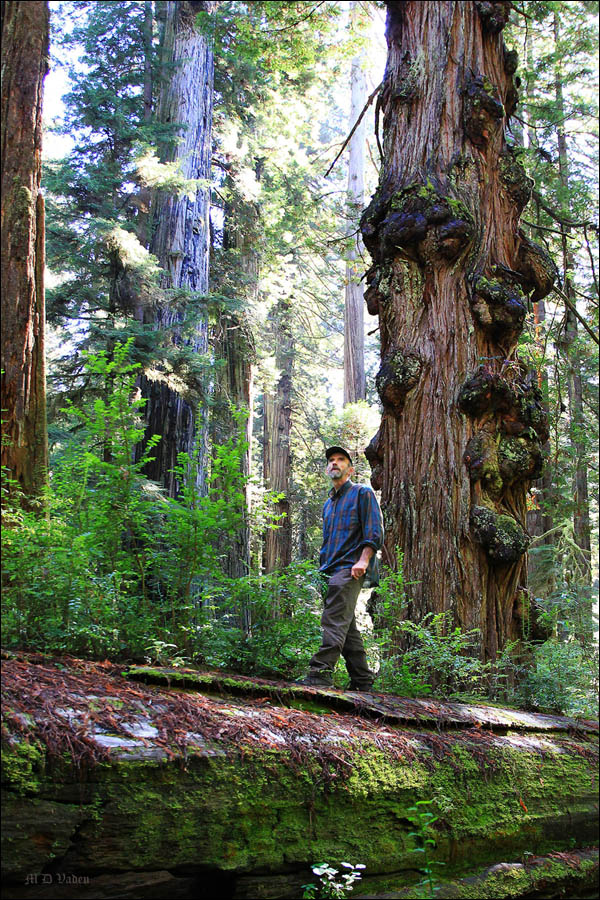
Photo: Chris Atkins, co-discoverer of world's tallest redwood 2006.
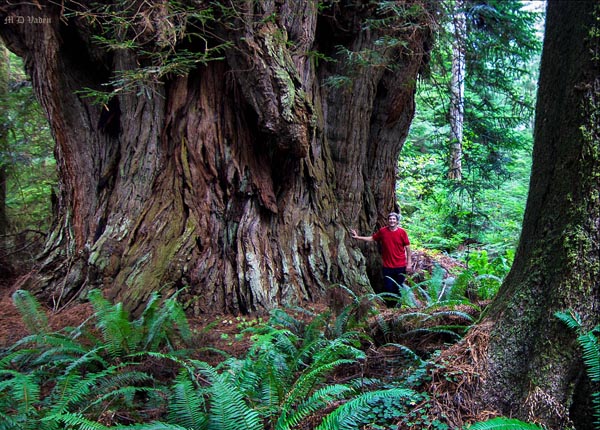
Photo: arborists from Denmark with author Gerald Beranek
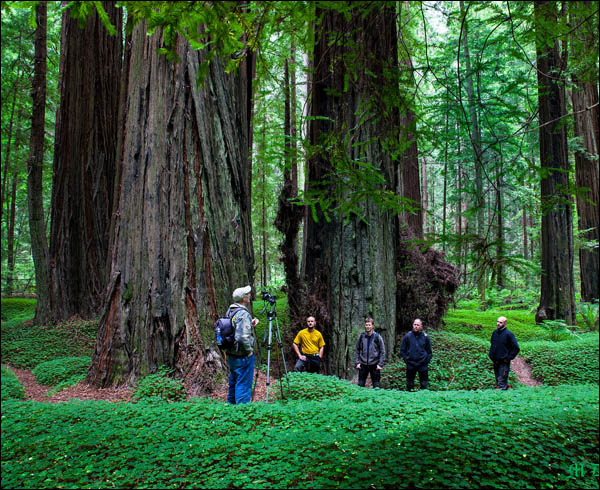
Photo: researcher Dr. Steve Sillett, engulfed by Redwood National Park
